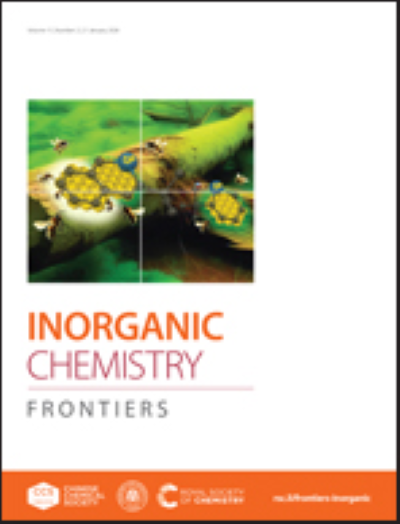Mechanism behind oxidase activity of cellulose-active AA10 lytic polysaccharide monooxygenases
IF 6.1
1区 化学
Q1 CHEMISTRY, INORGANIC & NUCLEAR
引用次数: 0
Abstract
Lytic polysaccharide monooxygenases (LPMOs) are copper enzymes that boost the degradation of different polysaccharides and play important roles in the sustainable production of biofuels, in human and plant pathogens, and potentially also in plastic degradation. Their activity depends on a co-substrate, where recent results show that hydrogen peroxide is the preferred co-substrate. Under typical experimental conditions, no hydrogen peroxide is added and it is instead produced in situ by LPMOs themselves, which could be the rate-limiting step. Previous theoretical investigations of the oxidase reaction have been highly inhomogeneous, and focused on different aspects of LPMO reactivity. In this paper, we systematically investigate how LPMOs generate hydrogen peroxide using accurate quantum mechanics/molecular mechanics (QM/MM) hybrid methods with extended QM regions. We find that the reaction of the reduced LPMO active site with O2 yields a superoxide coordinated to Cu(II), from which [Cu(II)-OOH-]+ can be formed via a proton-coupled electron transfer, using a second-coordination-sphere histidine as proton donor. Either OOH– dissociates from this species (while abstracting a proton from a water molecule) or [Cu(II)−OOH– ]+ reacts in a second protonation from the second-sphere histidine, yielding [Cu(II)−H2O2 ]2+, followed by dissociation of H2O2. Energetically, all three oxygen species can dissociate into solution, but the dissociation of H2O2 from the Cu(II) active-site is the most favorable while dissociation of O2.- is least favorable.纤维素活性AA10水解多糖单加氧酶氧化酶活性背后的机制
多糖单加氧酶(LPMOs)是一种铜酶,可以促进不同多糖的降解,在生物燃料的可持续生产、人类和植物病原体以及潜在的塑料降解中发挥重要作用。它们的活性取决于共底物,最近的研究结果表明过氧化氢是首选的共底物。在典型的实验条件下,不添加过氧化氢,而是由LPMOs自己在原位产生过氧化氢,这可能是限速步骤。以前氧化酶反应的理论研究是高度不均匀的,并且集中在LPMO反应性的不同方面。在本文中,我们使用精确量子力学/分子力学(QM/MM)混合方法系统地研究了LPMOs如何产生过氧化氢,并扩展了QM区域。我们发现,还原后的LPMO活性位点与O2反应生成与Cu(II)配位的超氧化物,其中[Cu(II)- ooh -]+可以通过质子耦合电子转移形成,使用第二配位球组氨酸作为质子供体。OOH -与该物质分离(同时从水分子中提取一个质子),或者[Cu(II)−OOH -]+与第二球组氨酸发生第二次质子化反应,生成[Cu(II)−H2O2]2+,然后解离H2O2。在能量上,这三种氧都可以解离到溶液中,但H2O2与Cu(II)活性位点的解离最有利,O2的解离最有利。-是最不利的。
本文章由计算机程序翻译,如有差异,请以英文原文为准。
求助全文
约1分钟内获得全文
求助全文
来源期刊

Inorganic Chemistry Frontiers
CHEMISTRY, INORGANIC & NUCLEAR-
CiteScore
10.40
自引率
7.10%
发文量
587
审稿时长
1.2 months
期刊介绍:
The international, high quality journal for interdisciplinary research between inorganic chemistry and related subjects
 求助内容:
求助内容: 应助结果提醒方式:
应助结果提醒方式:


